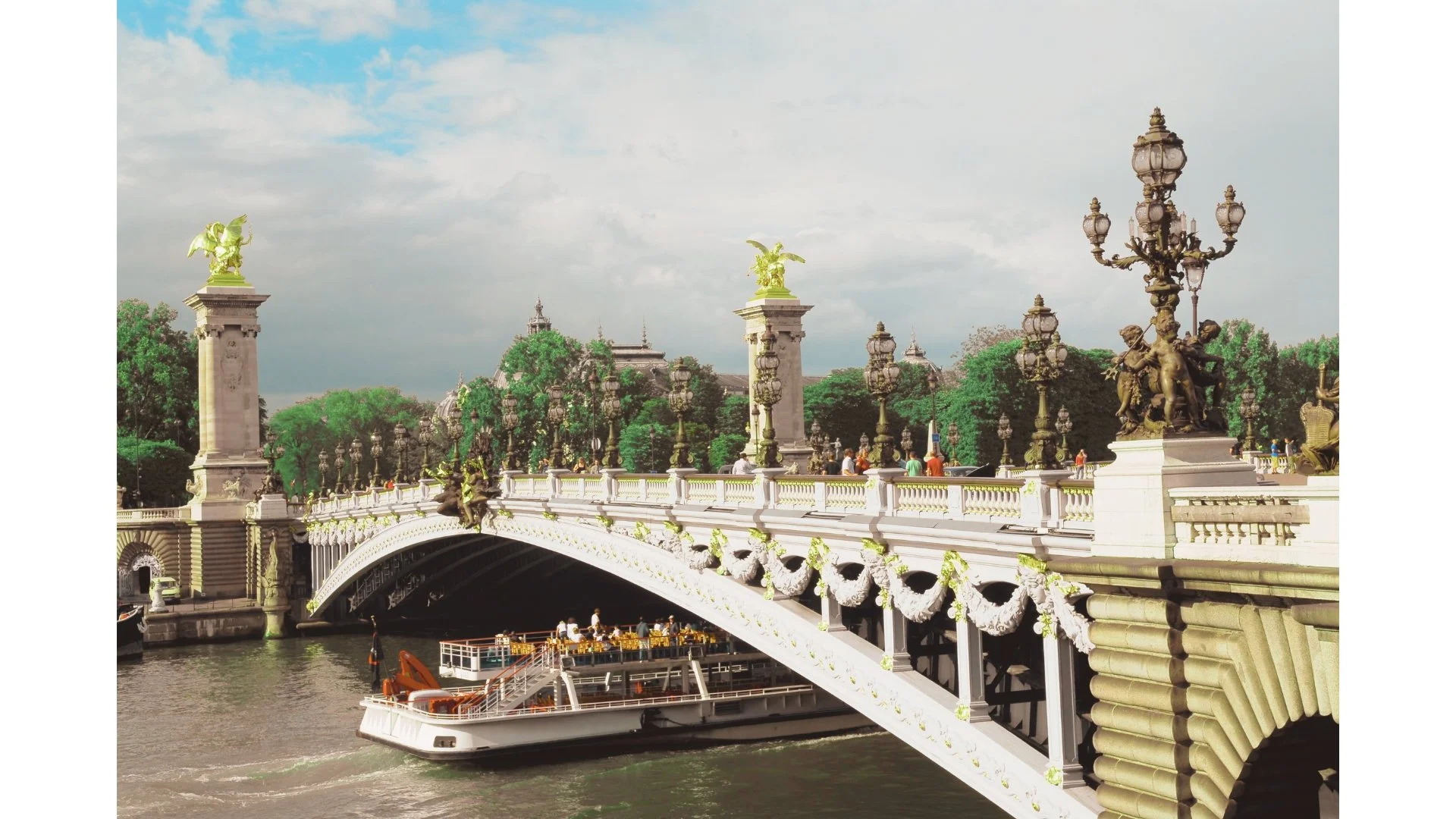Pont Alexandre III: Paris's Most Beautiful Bridge
Published May 26, 2025
Why Pont Alexandre III Belongs on Your Itinerary
Pont Alexandre III stands as a monument of excess, architectural ambition, and national pride. The golden statues, the ornate lamps, and the sheer scale of its detail catch you off guard, even if you think you've seen everything in Paris.
This guide breaks down why the bridge matters: the context of its creation, the symbols carved into every surface, and what makes it a favorite for both camera crews and everyday wanderers.
A Bridge Born of Diplomacy and Design
Built for the 1900 Exposition Universelle, Pont Alexandre III marked a political gesture toward Russia while also trying to outshine other world capitals with its scale and flair. The name honored Tsar Alexander III, but the design was pure French showmanship.
What Sets It Apart
Plenty of Paris bridges are beautiful. This one feels theatrical. At each corner, bronze horses and riders rise from the pillars. The lamp bases feature cherubs and mythical sea creatures. There are even fish cast into the ironwork, easy to miss if you're not looking closely.
The level of decoration is remarkable—nearly every surface has some ornamental detail. What makes the bridge even more interesting is that many Parisians don't dwell on it. It's more popular with wedding photographers and tourists than with locals, who see it more as background to their commute.
The bridge is listed as part of the UNESCO World Heritage zone along the Seine, though you won't see a plaque or barrier. Like most things in Paris, it's just part of the city's rhythm.
Architecture and Artistic Detail
A Structural Feat
When it opened, the bridge's 160-meter span was a marvel. There are no piers in the riverbed, which was considered a bold engineering move at the time. It makes the waterway fully navigable, but also lets you appreciate the bridge as a continuous piece.
The paint, officially called "gris tourterelle," is a muted gray chosen not for romance, but to set off the gilding. It does exactly that, especially when the sun is low.
Symbolism Everywhere
This isn't just decoration for the sake of beauty. Every sculpture has a reason to be there:
The Nymphs of the Seine and Neva are literal symbols of the Franco-Russian alliance.
The bronze statues represent artistic and military glory.
The shields and lions scattered throughout refer to both imperial and local power.
As art historian Jean-Claude Bonnefoy notes, "This bridge functions as a three-dimensional political statement. Each element reinforces France's position as both a cultural leader and a military power."
Pont Alexandre III in Film and Photography
Directors love the bridge because it doesn't need dressing up. It appears in films like Midnight in Paris and A View to a Kill not because of plot, but because it sells a mood. It's also the site of countless fashion shoots—because every angle looks styled.
Professional photographer Marie Dubois, who has worked on the bridge for over a decade, explains: "The combination of architectural details and the Seine backdrop means you rarely get a bad shot. Even overcast days work in your favor here."
Visiting the Bridge: What to Know
Best Views and Times
The middle of the bridge gives you a clean line to the Eiffel Tower and Les Invalides. Early morning is ideal if you want stillness. Late afternoon light is good for detail. Don't expect quiet in summer—this is prime territory for tour groups and photo sessions.
What to Look For
Most visitors look up. Try looking down. Some of the best carvings are at foot level. There's also an odd shift in pavement texture at the center that photographers often use to frame shots.
Nearby Sites
Within a few minutes' walk:
Grand Palais and Petit Palais, both grand buildings in their own right
Les Invalides, which includes Napoleon's tomb and a surprisingly good military museum
The start of the Champs-Élysées, which feels like a different city altogether
Getting There
Metro Line 8 or 13 will get you to Invalides, or Line 1 or 9 to Champs-Élysées Clemenceau. Walking in along the Seine is quieter and gives you a better approach.
When to Visit
There's no wrong hour, but each season gives the bridge a different character. Winter evenings are dramatic with surrounding lights. Summer brings the crowds, but also buskers and a lot of energy.
Final Thoughts
This bridge was not built for function alone. It was meant to impress, to declare, and to outlast the trends around it. Locals may ignore it, but that doesn't make it any less remarkable.
You'll remember your walk across it, even if you've forgotten where you were going.







